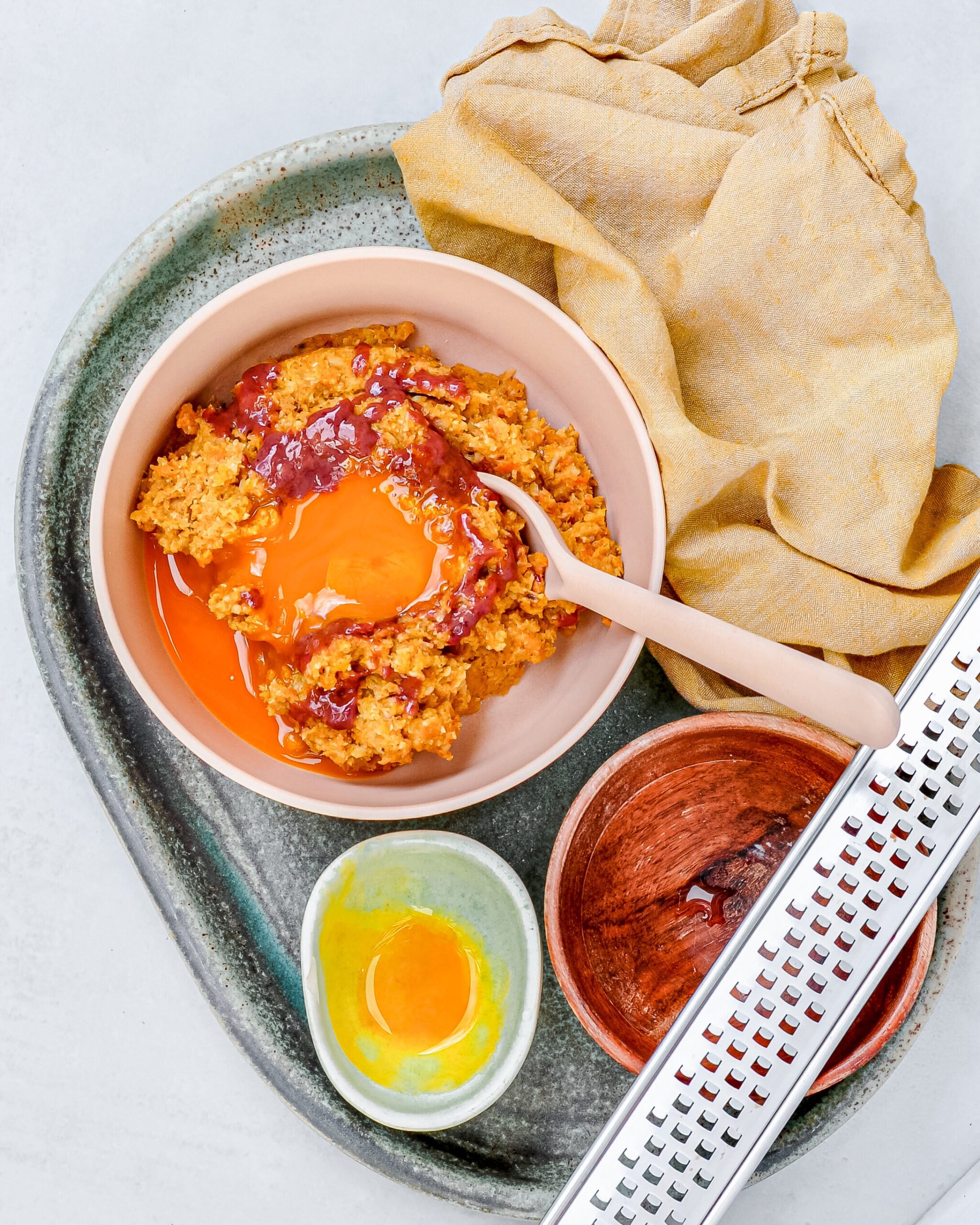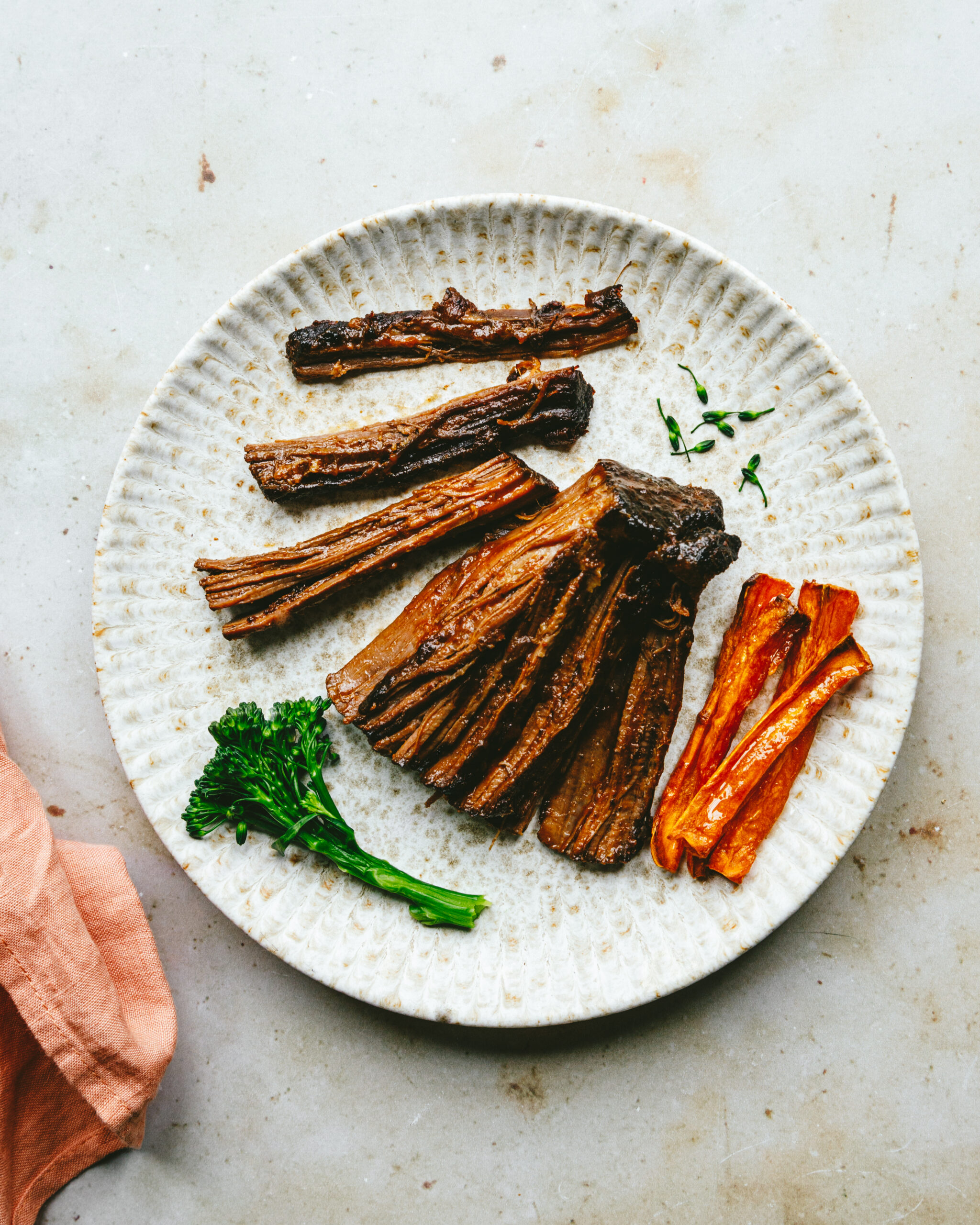One food that we recommend quite a lot here at Boob to Food is liver. Why? Liver is one of the most nutrient-dense foods available, which means that a little goes a long way – something that is very helpful when our babies only eat such small portions. Liver is particularly rich in iron, containing more than 4 x the amount found in beef! We all know how important iron is for our little ones, one of the reasons liver is a great food to add to our babies diets. You can learn more about iron for your baby here.
Despite being a fantastic nutrient-dense food for babies, there is a lot of fear and confusion around liver and its high vitamin A content, and whether it is safe for babies to eat. This blog will hopefully provide you with some clarity and practical tips for including liver in your little ones diet.
Nutrients in liver
As we have already discussed, liver is rich in iron and vitamin A (more on this later). It is also a wonderful source of folate, vitamin B12, zinc, copper, choline and vitamin D.
| Per 100g cooked | Iron | Vitamin A | Vitamin B12 | Zinc |
| Chicken liver | 11.1 mg | 10,700 mcg | 15.7 mcg | 4.3 mg |
| Beef liver | 6.5 mg | 19,500 mcg | 70 mcg | 5.3 mg |
| Chicken mince | 0.8 mg | 19 mcg | 0.7 mcg | 2.0 mg |
| Beef mince | 2.3 mg | 7 mcg | 2.1 mcg | 5.4 mg |
Vitamin A is an essential nutrient, meaning we must obtain adequate amounts from our diet because our body can not make it on its own. It is required to support growth, vision, reproduction and plays a huge role in our immune system. Vitamin A deficiency is a serious problem worldwide (especially in developing countries) which can cause night blindness and may increase the risk of illness and death from childhood infections, including measles and diarrhoea related illness.2,3
Similarly, vitamin A toxicity (also known as hypervitaminosis A) can also be an issue for children (and pregnant women). Hypervitaminosis A is relatively uncommon and usually arises from excessive supplementation or medication usage.4 Symptoms include nausea, vomiting, headache, dizziness, irritability, blurred vision, and muscular incoordination. Please note however, that it would take a child consuming 20 x the recommended intake (RDI) for an extended period of time to reach toxicity.5,6 But of course we should still proceed with caution when offering liver to our little ones.
Vitamin A requirements
As per the Nutrient Reference Values for Australia and New Zealand, the recommended intake of vitamin A for children are as follows:7
- 7-12 months: 430 mcg (RE)
- 1-3 yrs: 300 mcg (RE)
- 4-8 yrs: 400 mcg (RE)
The upper level of intake of vitamin A for these age groups are as follows:
- 7-12 months: 600 mcg (RE)
- 1-3 yrs: 600 mcg (RE)
- 4-8 yrs: 900 mcg (RE)
Anywhere between the recommended intake and the upper limit is considered a safe level of consumption of vitamin A.
Note: Vitamin A is expressed in terms of retinol equivalents or RE (sometimes called retinol activity equivalents or RAE)
1 RE = 1 mcg retinol = 3.3 International units (IU)
How much liver is safe for my child to eat?
The amount of vitamin A in liver varies depending on what animal the liver is from. Beef and lamb livers are higher in vitamin A than chicken and duck.
- Chicken liver – 30 g per week (approximately 1 chicken liver or 1-2 TBSP puree chicken liver)
- Beef liver – 20 g per week (1 TBSP of puree beef liver)
- Desiccated beef liver – 3 tsp per week (using the brand Cell Squared)
- Beef organ powder – 7 tsp per week (using the brand Cell Squared)
Please note, we have based these portion sizes off the Australian nutrition software called FoodWorks. There is a big discrepancy between this database and the American database which is called FoodData Central.8 FoodData Central claims that the vitamin A content of chicken liver is 3 x less than FoodWorks (4000 mcg per 100g compared to 12,000 mcg). This makes it really difficult to give you exact amounts, and hence the portion sizes we have recommended are conservative.
If liver is not a weekly food for your family, please don’t get caught up on these amounts. You can serve liver to your baby without measuring how much they have eaten in one sitting, just be conscious of how often you offer it.
Also, it is important to understand that when multiple nutrients interact in the body, their combined effects are different than if each nutrient were consumed alone. This is called nutrient synergy. Complementary nutrients interact in the body in intricate ways, and consuming them together in the form of whole foods such as liver is different to consuming the individual nutrients in isolation, which is what traditional nutrition science often examines.9 In other words, toxicity is more likely to happen when you are taking a vitamin A supplement, as opposed to eating vitamin A from liver.
What about cod liver oil?
Cod liver oil is a dietary supplement derived from the liver of cod fish. Like other fish oils, it is high in long chain omega-3 fatty acids (DHA and EPA), which support brain health and lowers inflammation. As the oil is derived from the liver, it is also rich in vitamin A.
Each brand of cod liver oil will have different amounts of vitamin A per serve, ranging from 30 mcg – 1100 mcg. It is important you check the label of the brand you are using to see how much vitamin A per serve it contains. This will determine whether you can include other liver products in your or your child’s diet.
But, doesn’t the liver store toxins?
Another common concern about eating liver is that it stores toxins. This is not entirely true – the liver processes toxins, however it does not store toxins. The role of the liver is to decide if a particular toxin is safe, and if not, it will safely remove the toxin from the body/animal. In saying this, it is true that the liver will contain some heavy metals and pesticides, just like the animal’s muscle meat such as the breast and thigh.10,11 This is due to the environment the animal lives in. A study in 2018 assessed the presence of heavy metals in all parts of a chicken (gizzard, breast, thigh and liver) and found that the liver did not particularly contain higher amounts of these heavy metals. They concluded that all parts of the chicken were within the safe limits of heavy metals for human consumption.12
How to prepare liver
There are many ways you can incorporate liver into yours or your child’s diet.
Pan-fried liver:
- Heat a frying pan over medium-high heat.
- Add a small amount of tallow, coconut or olive oil to the pan, enough to coat the bottom lightly.
- Carefully add one whole chicken liver or one slice of beef liver (about 20g) to the pan and cook for about 2-3 minutes on each side, or until they are browned on the outside and cooked through. The internal temperature should reach 70°C.
- Serve the tender liver as finger food for baby-led weaning.
Pureed liver:
- Follow cooking instructions 1-3 for pan-fried liver.
- Place the cooked liver into a small blender or food processor along with 2 tablespoons of filtered water, bone broth or breastmilk. Puree until smooth, adding a splash more liquid if needed to get the right consistency.
- Serve 1 tablespoon of the pureed liver on its own or stirred through another puree for spoon feeding. Spread over large strips of softly cooked vegetables such as sweet potato for baby-led weaning.
Pan frying and then offering as strips
Grated frozen liver:
- Use a box grater or micro plane to grate 1 tablespoon of frozen liver.
- Place a small saucepan over medium heat and add your puree of choice. Stir the grated frozen liver into the puree and cook for 1-2 minutes.
- Serve to your baby once it has cooled slightly.
Freezing and then grating to mix through warm puree
Using desiccated liver capsules to mix through or sprinkle on foods like smoothies, yoghurt, scrambled eggs, purees etc – or even into bliss balls!
References
- FoodWorks.online, Xyris Pty Ltd, 2019
- WHO Guideline: Vitamin A supplementation in infants 1–5 months of age. Geneva, World Health Organization, 2011.
- National Health and Medical Research Council. Nutrient reference values for Australia and New Zealand, 2006.
- Olson JM, Ameer MA, Goyal A. Vitamin A Toxicity. StatPearls. Treasure Island (FL): StatPearls Publishing; 2023 Jan-. Available from: https://www.ncbi.nlm.nih.gov/books/NBK532916/
- Olson JM, Ameer MA, Goyal A. Vitamin A Toxicity. StatPearls. Treasure Island (FL): StatPearls Publishing; 2023 Jan-. Available from: https://www.ncbi.nlm.nih.gov/books/NBK532916/
- RCH. Division of Medicine, Vitamin A. The Royal Children’s Hospital Melbourne. Accessed 29/2/24 https://www.rch.org.au/immigranthealth/clinical/Vitamin_A/
- National Health and Medical Research Council. Nutrient reference values for Australia and New Zealand, 2006.
- U.S. Department of Agriculture, Agricultural Research Service. FoodData Central, 2019. Accessed 29/2/24, https://fdc.nal.usda.gov/
- Townsend, J. R., Kirby, T. O., Sapp, P. A., Gonzalez, A. M., Marshall, T. M., & Esposito, R. Nutrient synergy: definition, evidence, and future directions. Frontiers in nutrition, 2023, 10, 1279925. https://doi.org/10.3389/fnut.2023.1279925
- Hadyait, M. A., Qayyum, A., Bhatti, E. M., Salim, S., Ali, A., & Shahzadi, M. Estimation of Heavy Metals in Liver, Gizzard, Breast and Thigh Muscles of Broiler Chicken in Different Area of Lahore by ICP-OES, 2018. PSM Veterinary Research, 3(1), 10–14. Retrieved from https://psmjournals.org/index.php/vetres/article/view/185
- European Food Safety Authority. The 2016 European Union report on pesticide residues in food, 2018, EFSA Journal, 16(7), e05348. DOI:10.2903/j.efsa.2018.5348. Retrieved April 14, 2021.
- Hadyait, M. A., Qayyum, A., Bhatti, E. M., Salim, S., Ali, A., & Shahzadi, M. Estimation of Heavy Metals in Liver, Gizzard, Breast and Thigh Muscles of Broiler Chicken in Different Area of Lahore by ICP-OES, 2018. PSM Veterinary Research, 3(1), 10–14. Retrieved from https://psmjournals.org/index.php/vetres/article/view/185
WRITTEN BY:
Renee Jennings (Dietitian and Nutritionist, APD)
REVIEWED BY:
Kate Holm (Naturopath & Nutritionist)
Cass McCarthy (Nutritionist)
Luka McCabe (RN/RM/Nutrition Consultant)




+ show comments
- Hide Comments
add a comment